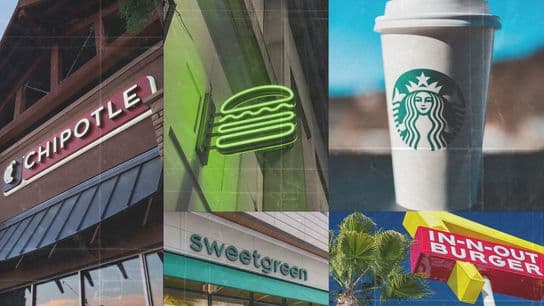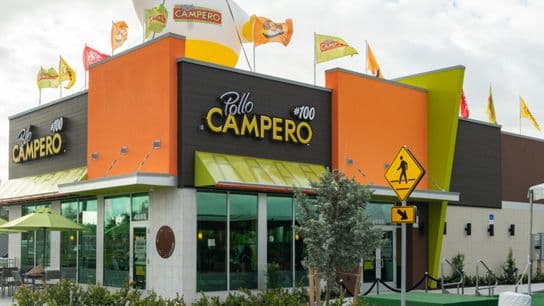What Kentucky’s Economic Outlook Means for Franchisors
If you’re a franchisor looking to develop your business in Kentucky, you’ll want to consider the state’s policy variables and growth rates when scaling your plans.
This summer, ALEC-Laffer published its annual Economic Competitiveness Rankings, which forecasts a state’s current standing within 15 state policy variables. The report features two different rankings: Economic Outlook — a forecast based on a state’s current standing in 15 state policy variables — and Economic Performance — a retrospective measure based on a state’s performance over a 10-year period from 2008 until 2018. For the state of Kentucky, these rankings reveal a lot about where the state economy is going and where there is opportunity for their economy to grow.
- 2020 Outlook Ranking: 26
- 2008–2018 Performance Ranking: 31
The State
Until the mid-20th century, Kentucky was considered an agricultural state. Since that time, other sectors have overtaken agriculture as the primary contributors to the state’s gross product. However, while the number of farms and the acreage devoted to agriculture have declined, the average farm size has increased, and more than half of the state is still in farmland. Now, Kentucky’s economy — based on manufacturing, trade, mining, agriculture, and tourism and other services — varies by region. Although manufacturing is the greatest income producer for the state, eastern Kentucky has little manufacturing activity, and a few other areas have none at all. It is also important to note that some of the franchise industry’s biggest players are headquartered in Kentucky, including Yum! Brands, Inc., KFC Corporation, Papa John's International and more.
Although the impact of COVID-19 on the state’s coffers is just beginning to be felt, Kentucky’s General Fund revenue will decline steeply, making it harder to invest in vital services for Kentucky communities. A smaller workforce and less demand will especially impact the individual income tax and the sales and use tax — the two largest sources of revenue for the state.
Making Sense of the Data
What does this mean for Kentucky’s economy? To start with the Economic Performance report, the index shows that within the past ten years, Kentucky has been outperformed by 24 other state economies. The performance index is based broadly on a state’s performance within State Gross Domestic Product, Absolute Domestic Migration and Non-Farm Payroll Employment. The category that slowed the agriculturally rich state down most significantly was their Non-Farm Payroll Employment status. Kentucky only grew 6.6 percent in this category, leaving them with a ranking of 26th among states, many of whom have further diversified their economies outside of farming. Kentucky’s State Gross Domestic Product left them with a ranking at 34, with only 31.6 percent growth.
The Economic Outlook tells another story about the Kentucky economy. The ranking is based on a state’s current standing in 15 state policy variables. Each of these factors, ranging from sales tax burden to state minimum wage, is influenced directly by state lawmakers through the legislative process. In this ranking, Kentucky appears at No. 26. Although they’re ranked in the middle of the pack, the state still has more potential to grow economically.
The report indicates that, generally speaking, states that spend and tax less experience higher growth rates than states that spend and tax more. While this is an important finding for entrepreneurs looking to start their own business, it shouldn’t discourage them from investing in the franchise of their dreams if they're in a market with a slower growth rate. For states like Kentucky, this presents an opportunity to grow. For example, when it comes to recently legislated tax changes, Kentucky was only ranked 38th, with a $1.01 change per $1,000 of personal income. On the plus side, the state is ranked at the top for state minimum wage since it matches the federal floor of $7.25.
When it comes to deciding where franchisors should develop their brand, it’s always important to look at the complete picture of what the region has to offer. While they may only be ranked 31st for outlook, Kentucky has been able to maintain a fairly moderate ranking and outlook for several years now.
Franchise Growth Plans
So what should franchisors do with this information? Though most franchisors take a shotgun approach — meaning wherever a prospect franchisee inquires, the franchisor will typically entertain that marketplace — the strategy of looking at these overall policies can help them scale their business at a more efficient rate. With that said, the findings within the report should not be the deciding measure for franchisors, but they should play a role in the decision.
Buffalo Wings & Rings
- Current units in state: 8
- Growth capacity in state: 5+
- Total jobs created at max growth capacity: 440
Currently, Buffalo Wings & Rings has eight restaurants across the state of Kentucky. The corporate team invested in Kentucky growth by opening a corporate-owned location in the summer of 2014, right on the other side of the Ohio border in Crestview Hills.
“We reached saturation in Cincinnati and want to continue to grow in the closest big cities outside of our home market, and we see great potential in Louisville, Kentucky” Philip Schram, chief development officer of Buffalo Wings & Rings, told 1851 Franchise. “We are already growing in Columbus, Ohio, so Louisville is the next city that makes sense, especially with the great reception we’ve already seen in the state. If you pair that with the strong presence we also have in southern Indiana, it’s the logical next step in our strategic expansion plan.”
Checkers* & Rally’s
- Current units in state: 33
- Growth capacity in state: 60
- Total jobs created at max growth capacity: 1,500
While the iconic burger brand Checker & Rally’s already has 33 locations throughout Kentucky, that growth is just the beginning — the brand has room for 60 more units in the state.
"The Checkers & Rally's franchise opportunity has proven to be a strong and resilient investment throughout the COVID-19 pandemic,” said Director of Franchise Recruitment Ursula Lane. “Our drive-thru model and well integrated delivery system, has allowed our brand to thrive during a difficult time for many restaurant brands, which has resulted in minimal disruption; new restaurant openings with record sales; a lift in both drive-thru and delivery sales and several new franchisee signings. There are a lot of great things in the works and we're looking forward to partnering with strong franchise owners as we continue to grow our brand."
Wing Zone
- Current units in state: 7
- Growth capacity in state: 30
- Total jobs created at max growth capacity: 450
The delivery-focused wing franchise Wing Zone notes that the state of Kentucky has the capacity for 30 new locations. Wing Zone restaurants have been most successful in markets that are oftentimes overlooked, CEO Matt Friedman told 1851 Franchise.
“Everyone rushes to the metropolitan cities, but they forget that there's so much competition there,” he said. “When we go into a market, it’s because that market is new, innovative and we offer something our future customers can get excited about. Wing Zone thrives in mid-tier markets where the franchise is able to dominate without hundreds of competitive restaurants vying for the business of its customers. We’re investing heavily in our restaurants and bringing new franchisees to the system. Through that mentality of targeted growth and discipline, we will be able to get to mass scale in the next several years.”
Franchise Brands Headquartered in Kentucky
- A.D. Banker & Company
- Dippin' Dots Franchising, Inc.
- Doc Popcorn
- Fazoli's Restaurants
- Fitness Revolution
- Flicko's Franchise Corp., Inc.
- KFC Corporation
- Kona Ice
- Long John Silver's Restaurants, Inc.
- Papa John's International
- Texas Roadhouse
- Valvoline Instant Oil Change
- Yum! Brands, Inc.
- Halloween Express
- A&W Restaurants*, Inc.
*This brand is a paid partner of 1851 Franchise. For more information on paid partnerships please click here.









